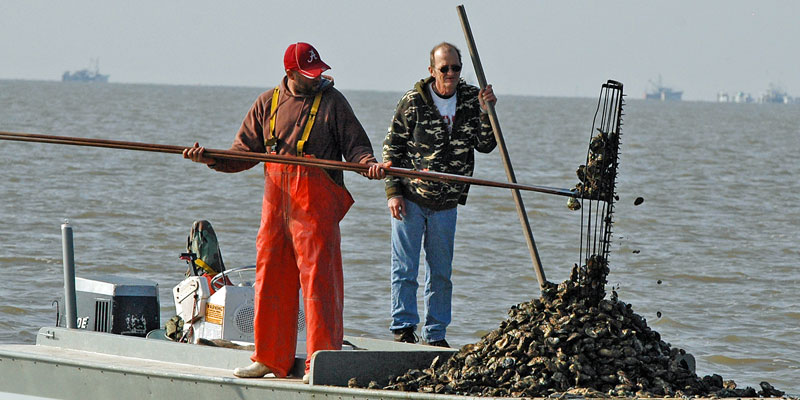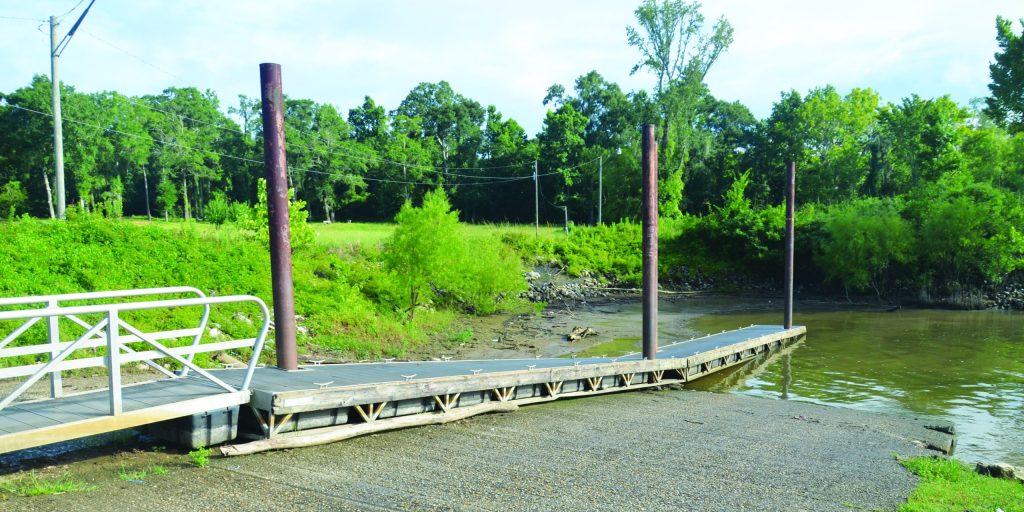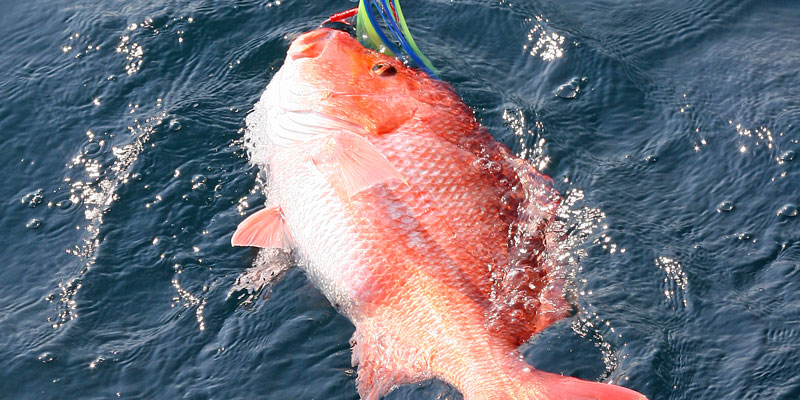The high water in January that shut down the oyster season in Alabama has finally subsided, and the oyster catchers were recently cleared to resume the harvest of the state’s prized oysters by the Alabama Department of Public Health (ADPH).
This may not seem like big news for some, but it is great news considering the uncertainty of whether Alabama’s oyster reefs would be open at all.
The area known as Cedar Point West, just west of the Dauphin Island bridge and Cedar Point Pier, opened Tuesday, February 4, to commercial and recreational harvest of oysters. Harvest hours will be 7 a.m. until 2 p.m. with a commercial limit of six sacks.
“There were some oysters that were not detected during our survey, but while the oyster catchers were working, they found a pretty sizeable area of harvestable oysters,” said Alabama Marine Resources Division (MRD) Director Scott Bannon. “So we’re going to give them the opportunity to work in that area.”
Oyster harvesting had been shut down because of a lack of legal-size oysters on the traditional oyster reefs. MRD surveyed the Cedar Point West, Cedar Point East and Heron Bay reefs again and found the oyster population better than expected.
“Those areas were as productive or more productive than we anticipated,” Bannon said. “Cedar Point East was an area that we did not have good data on because it is so big and the water is deeper with some other challenges there. But the catchers worked there for a couple of weeks and harvested just over 2,500 sacks. In addition to the harvestable oysters, they discovered a lot of sublegal oysters, which will be available for harvest next season. On the other reefs at Cedar Point West and Heron Bay, they saw the same thing. They found good, harvestable-size oysters, and they found plenty of sublegal oysters, which, again, will be next year’s crop. We have good confidence that this upcoming fall season will be as good as this season and maybe better.”
Before this week’s reopening, Alabama oyster catchers had harvested 9,500 sacks of the succulent bivalve mollusks when the growing waters were closed by ADPH on December 27, 2019, as a precaution due to high river levels, which may increase bacteria in the area. Continued high water then delayed the opening for additional harvest until this week.
“The 9,500 sacks harvested in this season to date has been good,” Bannon said. “That was more than the last five years combined. I feel like we’re turning a corner.”
A harvestable oyster is 3 inches across its widest point. MRD Conservation Enforcement Officers use a 3-inch ring to measure the oysters. If the oyster passes through the ring, it is considered sublegal or undersized. If the oyster touches the sides of the 3-inch ring, it is considered legal to harvest. MRD officers inspect for licenses, oyster size and sack size to ensure compliance with the regulations.
With quality oysters like those found in Alabama in high demand, the oyster catchers were rewarded with a quality return on their work.
“The price was really good this season,” Bannon said. “At one point, it was 85 cents per pound, which was almost double historic highs. When the waters closed in December, they were still 65 cents per pound.”
Bannon said the high demand for oysters is related to high-water events last year that closed oyster production in Louisiana and Mississippi.
“The freshwater events from last year pretty much decimated the oysters in Mississippi and caused significant damage in Louisiana,” he said. “The only Gulf oysters were coming out of Texas. We are on a different river system and didn’t have the same high water they had last year. The prolonged influx of freshwater that we received did have a negative impact on several fisheries, but, thankfully, the impact to our oysters was not as bad as it was in other states.”
Bannon said the biggest impact to Alabama from the lack of oysters from Louisiana and Mississippi is that our large seafood processing industry suffers, especially in the Bayou La Batre and Bon Secour areas.
“We didn’t have product to process from Louisiana or Mississippi,” he said. “We process a lot of shrimp, crabs and oysters from those other states.”
Bannon said part of the reason Alabama finally has harvestable oysters again is because environmental conditions have improved. Oysters require a balance of freshwater and saltwater to successfully reach a harvestable size. If the water is too fresh, the young oysters can’t survive. If the water salinity is too high, it leaves the oysters vulnerable to predatory marine species.
“For the last couple of years, our surveys showed that we would get a good spat (larval oysters) set, but they would not survive due to an influx of freshwater that lasted too long for the juvenile oysters to survive,” he said. “Later in 2019, salinity levels were right for the oysters to survive, but it wasn’t so salty that the oysters were vulnerable to predation from the drills (predatory snails), because the drills can’t handle freshwater. Once the oysters get a little larger, they can handle more freshwater for longer periods of time and can resist the drills a little better. It’s that juvenile stage where they are most vulnerable to changes in the environment and predators.”
One benefit for having the oyster reefs open for harvest is the actual work done by the oyster catchers improves the habitat.
“Oyster catchers working the bottom exposes shells and cultch material to improve the spat set,” Bannon said. “The benefit of opening the season was that the catchers were able to harvest some legal oysters and find sublegal oysters that will be available for the next season. We hope these steps lead to continued improved harvest.”
Oyster catchers are limited to the use of tongs or they can harvest by hand along the shoreline or off the bottom. Divers are also allowed to take oysters. The use of dredges has been prohibited for the last several years.
Bannon said some of the oyster reefs in Mobile Bay have not rebounded to the levels they would like to see, but MRD is working to remedy that.
“Some of the reefs in Mobile Bay in the deeper water have suffered from low dissolved oxygen levels on the bottom,” he said. “We’re working on some projects to elevate one of the oyster reefs to get the oysters up into better dissolved oxygen levels. Also, we are going to use juvenile oysters raised at our Claude Peteet Mariculture Center (in Gulf Shores) and grow them at our facility on Dauphin Island. Then we will deploy them on some of those reefs to try to jump-start them back into harvestable condition. We are also experimenting with how we deploy cultch material. It’s called the Mounds and Furrows Project. Instead of spreading the material flat, we’re going to put it in piles so that when the spat attaches, it can get inside the mounds and furrows and be protected from predators. We want to see if that is a more productive way to deploy cultch material. All of these projects will be moving forward in 2020.”
Bannon said wild oyster production in Alabama is critical for a number of reasons, including water quality, a treasured food source and crucial habitat for a variety of fish species and wildlife.
“Having a viable oyster population is very necessary for a healthy water system,” he said. “Adult oysters can filter as much as 50 gallons of water a day. There are a tremendous number of benefits to having oysters in the system.”
For those who prefer Alabama’s tasty oysters, do not hesitate to find a market selling them soon. Bannon said MRD will monitor the harvest effort to determine when the season will end.
“Other than being some of the best oysters around, the harvest provides jobs for people,” he said. “Wild oyster production has a very positive economic impact on the Alabama Gulf Coast.”
David Rainer is an award-winning writer who has covered Alabama’s great outdoors for 25 years. The former outdoors editor at the Mobile Press-Register, he writes for Outdoor Alabama, the website of the Alabama Department of Conservation and Natural Resources.













